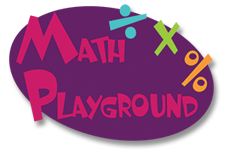(note: this post is from an email exchange that I had with a colleague earlier this morning. She graciously allowed me to reprint her email Question and my reply. We hope others find the exchange beneficial.)
Bob-
I am working on a final paper for my grad school class and have hit a wall. I am sure it is just a brain block, but am hopeful you see this before the end of tomorrow and can help me.So I have been building a homonym game on Scratch and had great success until I tried to fix something! Of course I had not saved a copy of the successful one and have to almost start over! Ugh!
Anyway, aside from the obvious problem solving benefits of using Scratch with students, what are some of the other benefits for students? I know that seems like a rather obvious question, but my brain is fried on Scratch and I need to branch out to other resources!
Thanks!
Here’s my reply:
First, I’m sorry to hear you’re having trouble fixing it… I hope that works out for you today. IF it doesn’t, here is my main advice: GRAB ANY MIDDLE SCHOOL HELPER AT 2:00 AND ASK THEM TO HELP YOU FIX IT!!! Or any student, for that matter!
Now, as to the benefits, I could write an entire book about that, so I’ll just put a few things in, and then we can chat in person 
First: the sentence that I put above (“GRAB ANY MIDDLE SCHOOL HELPER AT 2:00 AND ASK THEM TO HELP YOU!!!”) sort of answers the question itself. KIDS are able to take over, teach the teacher, figure out stuff by exploring, try things, make mistakes, etc. THIS is the true intent of Scratch. Mitch Resnick made Scratch with his team at MIT. The team is (purposefully) called “The Lifelong Kindergarten Group” because in kindergarten we are allowed (or used to be allowed) to try things out, build things and knock them down, make a mess, experiment, fool around with tools, CREATE! Resnick says that we should be allowed to be working like that ALL the time —for our entire lives—because that is HOW WE LEARN BEST. It is the natural way the brain operates.
I believe that we, as teachers, do too much of the work FOR students. Learning how to program in SCRATCH puts the learning completely in the hands of the students. There are infinite paths a student could take with the program. There’s no way that we, as teachers, can prepare for the direction that the student will head towards. The student is going to have to figure out how to succeed without the teacher. For instance, by getting help from other students on the site, or watching a video about a particular code, or by “reverse engineering” someone else’s Scratch project. This “reverse engineering” is the BEST way to learn Scratch. By downloading someone else’s project and picking it apart, the student becomes detective and learns the new “literacy” needed to program.
It is essential that we teach our students to code. I point you to the ads that Code.org has been showing lately. Learning coding will help our students succeed in future jobs that we can’t even dream of yet. I actually believe that it is as important to teach coding/programming as it is to teach how to read. Not that programming is a new literacy, but that it is an extremely important one for future careers. I believe if we’re not teaching coding from elementary all the way through high school, then we are doing a grave diservice to our students.
Many skills are imbedded in Scratch:
Algebraic Thinking — We, as teachers use this term all the time, but I never really understood what it means until I got to see Greg Tang explain it. Algebraic Thinking is when you know how to do one thing and then are able to do another thing in a COMPLETELY different environment with different variables, because you have mastered the skills necessary by accomplishing the first activity. Scratch forces the student into these unknown territories all the time.
Social Networking — The Scratch site is a social networking platform as well. Students go there to connect with other students to do WORK. They are learning the skills necessary for future jobs where they WILL work with people from all over the world to solve problems. The social platform at Scratch is monitored by adults for abuse, but the site is mostly kept safe and appropriate by other students: they want this platform to stay true to its purpose and will take on the responsibility of “flagging” inappropriate comments or content to keep their learning environment pure.
Scratch teaches all the important skills that the NETS (ISTE’s Standards) are trying to reach. Specifically: Information and Communication Skills, Thinking and Problem Solving Skills, and Interpersonal & Self-Directional Skills. Here’s a great page to back up “Why We Teach Scratch.”
Also, great videos can be found from MIT that addresses the importance of Scratch.
Also, I’ve had the pleasure to hear Mitch Resnick speak on several occasions and he granted me permission to record his talk at the Building Learning Communities conference back in 2010. You can hear it HERE:
I hope this helps and welcome to the wonderful world of Scratch!
Bob


































I forgot to say this in my post: Using Scratch to make a homonym game!! FANTASTIC!!!
A couple of thoughts from the perspective of a classroom teacher with administrative demands to do certain things in a certain amount of time (the school year), none of them being programming! How do we combine the expectations of all that we have to teach with what seems to be a big learning curve for “learning” Scratch?
Now, before you get too crazy, I know that students will never “learn” Scratch in its entirety, since there are so many ways to approach the same problem. What I am talking about is mastering the basics of the program and applying it to something in class. That takes time and if we already are having trouble finishing all of the academic expectations, I wonder how to fit that piece in.
Here is the homophone game I created. As of this post I am still tweaking some bugs that are stumping me!
I also used Scratch to create a book trailer. I would love to see what students can do with each idea.
http://goo.gl/H9zEw
Marty,
Trust me: I hear/feel your pain. Without much time to completely write my response now (we’ll have to meet at lunch soon!), I’ll summarize quickly what I have done.
I’ve used Scratch with the school’s Core Values. In other words, it’s already something that we’re working on, learning about, and it’s been very easy to tie it to writing (4th grade students have usually ended up with an 11 page document), and then demonstrate one of the values by building a movie or game in Scratch.
I believe kids have to MAKE something to fully internalize/own it. It could be any tool, but Scratch connects so nicely to so many other subjects, especially, Math. With it, I’ve seen students understand X,Y Coordinates so easily, when before it was much more abstract. You CANNOT do Scratch without understanding X,Y, so they’re are learning it for an authentic purpose, rather than in the abstract.
Looking forward to more conversation!
B
Pingback: Mr G's Idle Musings » Blog Archive » My Diigo 05/06/2013
“How do we combine the expectations of all that we have to teach with what seems to be a big learning curve for “learning” Scratch?”
I imagine there is no right answer to this question, depending on circumstances, but I believe some time could come from math if needed as there could easily be some payoff in: geometry; mathematical thinking tools: problem solving, reasoning, and representation skills; and algebraic ideas, including patterns, variables, and functions.
Another chunk could take place in language arts if you did some storytelling (original or summarizing a book/chapter). More chunks could be done in social studies or science with short projects.
Plus, with the new Scratch 2.0 I think you could get many more kids learning parts at home. I know many of my 3rd/4th graders do that now with 1.4, but 2.0 doesn’t require you to install the software.
My struggle is with the balance between teacher challenges and students coming up with their own challenges. I want them to jump right in, but if I give them a few challenges first that get at a few basic skills in a problem-solving way (not direct instruction), the kids end up moving much faster and really getting into problem-solving, sharing ideas with classmates, iterating, and tweaking.
http://balancedtech.wikispaces.com/AnimatEd+With+Scratch
@Marty - “How do we combine the expectations of all that we have to teach with what seems to be a big learning curve for “learning” Scratch?”
Don’t ignore the fact that a lot what students learn when they learn Scratch IS related to all the other stuff we have to teach. When students learn Scratch they also learn how to think for themselves which also also helps them learn all the other stuff.
As for a “learning curve”? In all honesty it’s a shallow curve. I had 7th graders take off without much instruction at all and in just a few days were doing things I wasn’t even aware of. Watching them solve Euler Problems in Scratch was not only an insight into their mathematical thinking skills (or lack thereof), but also turned into a great opportunity to develop those skills in ways their math teachers hadn’t.
Pingback: Update: Diigo in Education group (weekly) | ChalkTech